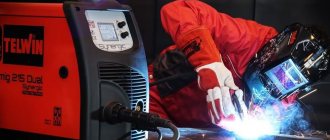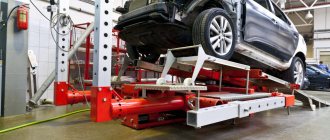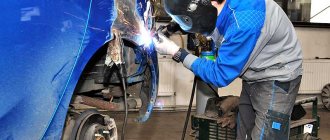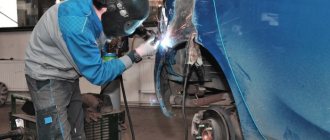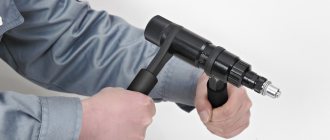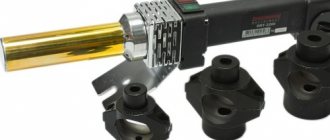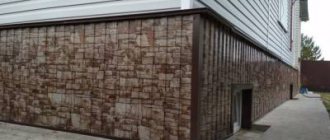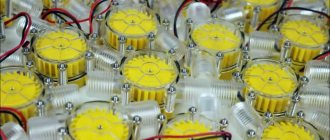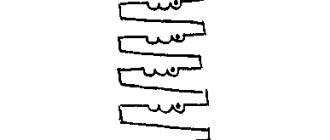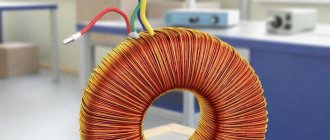To perform body repairs, simple tools are often not enough, and specialized and expensive equipment is required. Deformation of the main parts does not always mean they need to be replaced. Restoring the geometry of the body can be done in a workshop, but these services have a considerable cost. If you have the appropriate equipment, you can easily carry out repairs yourself. To perform such work, you will need a homemade slipway, the assembly of which will not take much time.
Purpose and advantages of self-manufacturing a slipway
A slipway is mechanical equipment whose task is to restore the original state of the car frame and body geometry. Straightening of deformation bends, dents and other irregularities is carried out using local loads. In most major changes in body geometry, a slipway is the only possible solution to restore the shape of the car frame. The presence of such equipment is mandatory for every workshop and guarantees high-quality body repairs.
To decide to make a slipway with your own hands, you need to understand not only the purpose of such a mechanism. Manufacturers offer different functionality of this equipment. Some models are only suitable for use in large service centers. There are also more mobile options that can be installed in a garage or similar space. When purchasing such devices for personal use, their price will be high and making them yourself is most advisable.
Spotter
The spotter is used for body repair and helps, like a reverse hammer, to tap small deformed parts. This is one of the methods of machine straightening, which is performed point by point using similar equipment. In this regard, this miniature device has many advantages over a conventional device:
- The straightening work is carried out efficiently.
- The working time with the spotter is short.
- There is no need to disassemble the car to perform auto repairs.
- The unique operating principle allows the spotter to eliminate mechanical damage and defects of the body, including the hood, fenders, and sills.
Straightening with a spotter will allow a car owner who wants to repair the car themselves to save on costs. To choose the right spotter, you should take into account the nature of the damage to the car.
The importance of correct car geometry
Body deformation can occur for various reasons. An accidental collision with an obstacle, a rollover while driving on rough terrain, or getting into an accident does not pass without leaving a mark on the car. A change in geometry on the side members or a curved car frame can lead to the following consequences:
- The presence of noise and extraneous sounds when the engine is running;
- Inability to open doors, trunk or hood;
- Car skidding to the side when driving in a straight line;
- Gaps in body panels and structural elements;
- Uneven tire wear.
Such features of frame damage cast doubt on the ability to operate the vehicle. Basic body dimensions are indicated in the technical documentation of each vehicle. Moreover, changing them will require restoring the original parameters to continue safe driving. Slip mechanisms make it possible to almost completely eliminate deformation, and creating such an assistant yourself will be a good alternative to contacting a service center.
How to use stretching correctly
When performing body repairs using stretching, you must do the following.
- Step 1. A visual inspection is required, during which the degree of damage to the structure, the distance between deformed areas, material and surface quality should be assessed.
- Step 2. Take a set of stretchers and perform assembly: connecting the hydraulic cylinder and hose. Use an extension cord if necessary.
- Step 3. The assembled structure must be secured in a stable position so that it does not slip. To do this, use the appropriate attachments provided in the repair kit.
- Step 4. After installing the structure, press the pump to firmly fix and stop the unit.
- Step 5. To straighten the element, use a pump to create forces that will lead to its straightening.
Important! If the part is severely damaged, the straightening procedure should be repeated. The stretch marks must be used carefully so as not to further damage the car body.
Selection of slipway design
The application of multidirectional forces is the most important feature of a power stand. Such work is difficult to do manually. You can make a slipway with your own hands of various designs. Such devices are made of durable metal, and their features depend on the type of repair being performed. When choosing a suitable slipway model, you should take into account the parameters of the transport for which it is being manufactured. The dimensions of the stand, characteristics of devices and mechanisms can be selected based on the most successful models from Trommelberg, Nordberg BAS or Autorobot.
Depending on the nature of the work being carried out and the versatility of use, there are several varieties of such power stands. With the help of small structures it will be convenient to carry out local repairs. and a large-sized industrial slipway, equipped with powerful hydraulic equipment, can cope with heavy freight transport. To select a suitable design, you should know the types and purposes of all such devices.
Clamps from AIST
Now, for comparison, let’s look at clamps from the manufacturer Aist:
- Retractable hook 5-ton, price 1.8 thousand rubles. Has a working width of 80 mm. Designed for chains and effective fixation of the brace to the body;
- Door pillar straightening plates 2-ton. The cost of clamps of this type is 2.7 thousand rubles. Ideally fixed to the surface of the car body;
- Plate bracket, an excellent option for stretching a deformed body. Withstands up to 3 tons when used with chains. Fixation is carried out using a screw. The cost of the plate is 2.7 thousand rubles;
- 2-way clamp that holds 3/2 ton. Used for body straightening. Makes it possible to pull metal in the forward direction with a force of up to 3 tons, in the lateral direction - up to 2 tons;
- A 5-ton clamp for body work from the Aist company, priced at 2.9 thousand rubles, is very functional. It works in only one direction, the width of the jaws is 45 mm;
- 2-ton clamp for body work, priced at 2.9 thousand rubles. The ideal flat design makes it easy to work in confined spaces. Functions in one direction;
- The grip, priced at 3 thousand rubles, is a very convenient tool for carrying out various work on the body;
- A pincer-like 5-ton body clamp, priced at 3.4 thousand rubles. The width of the jaws is 40 mm.
Types and functionality of straightening stocks
There is no strict standardization of power stands. Most manufacturers supplement the slipway with various equipment. Thus, anchor clamps, special grips and a multi-tower design of the stand ensure the creation of force in the desired direction. For use in the garage, you can select only the most necessary equipment, and purchase or manufacture the rest later. All slipways can be divided into 3 types, each having its own characteristics and functionality.
Frame structure of the slipway
Frame slipway - is a structure for pulling relatively small deformations. Such a stand is suitable for carrying out local work and allows you to restore the geometry of the deformed area with high accuracy. The metal frame has a complex structure, which serves to ensure sufficient rigidity. Strong fixation allows you to stretch the vehicle in any direction and change the direction of the applied forces.
The frame stand is quite popular due to its small size and practicality. Fixing the machine on such a frame is done with special grips. To pull out deformed units, a chain connection is used, which ensures restoration of the correct position of the damaged part. Such an installation must include a lift to ensure the vehicle is secured at the required height. The arrangement of such a stand will require various parts to ensure the capture and installation of the machine.
Floor construction of the slipway
Floor stand - used by professional companies specializing in body repair. Its design implies fairly high traction forces, suitable even for the restoration of freight vehicles. In the absence of a large amount of work, this system does not take up much space, which provides additional ease of use. It is quite difficult to make such a slipway for body repair with your own hands due to the huge number of parts. In most cases, the functionality of such a power stand is not needed in a regular garage.
Any floor slipway needs a specially prepared base. Installation of rail tracks, rack systems, anchors and fastenings requires precise calculations and the availability of appropriate equipment. A floor berth is most convenient when installing fastening systems flush with the floor, which will ensure safe movement and work. The capabilities of such a force stand will be sufficient to access any area of deformation, and installing and securing the machine does not take much time.
Platform construction of the slipway
Platform slipway - has some similarities with an overpass structure. With this device it is easy to pull the car body in any direction. The platform of such a device has enormous possibilities for installing additional equipment. It is most convenient to perform pulling on such a stand, and its functionality is sufficient for professional use or repairs in the garage.
For self-production, this design does not present any difficulties. Any platform slipway is superior in its capabilities to a frame one and is suitable for most types of vehicles. To repair a machine at this stand, you can use one or more tower racks, which will be enough to carry out the most complex work. The pulling force of hydraulic equipment has no restrictions. Moreover, such a platform can be used for body repairs of SUVs and heavier equipment.
Machine on platform
Distinguished by its high reliability and powerful fastening system, the platform slipway is good because it can easily pull the car body in all directions. In addition, it can perform other types of operations, such as finishing dents and minor damage. The platform slipway also allows you to adjust the geometry of the body and frame.
The good thing about a platform slipway is that to install equipment on it you do not need an initially prepared base, because the machine is already equipped with everything necessary, including the platform on which the machine is placed.
Let's look at the most popular types of platform slipways, their prices and features in the table below.
| Model | Cost, rubles | Technical data | Equipment | Peculiarities |
| Platform slipway NORDBERG BAS12 | 682 000 | Platform length 5190 mm; platform width 2120 mm; working platform height 570 mm; pressure in the hydraulic system 70 MPa; maximum turret thrust force 95 KN (KH); force application angle 360°; maximum liftable weight 3000 kg | A measuring ruler, a crane for straightening roofs, two carts for rolling up a car, a hand winch. | When designing the NORDBERG BAS12 stand for editing body geometry, advanced technologies were used and all the advantages and disadvantages of the most famous brands of stocks were taken into account. Strength, precision, flexibility, lightness, practicality and safety - these are the principles of Nordberg stands. |
| Platform slipway FA-2 | 696 000 | Platform length 5190 mm; platform width 2120 mm; platform height 570 mm; column force 10,000 kg; maximum lifting weight 3000 kg; gross weight 2300 kg | Lifting platform; 2 power towers; yardstick; 2 pneumohydraulic pumps; drive-in ramps; 4 standard clamps; mobile stand with equipment | Platform slipway for restoring the geometry of car bodies with damage of any complexity. The platform of the slipway has longitudinal grooves, which allows you to install 4 body grips anywhere on the platform. |
| Platform slipway ATIS B05 | 769 000 | Platform length 5200 mm; platform width 2100 mm; working platform height 500 mm; pressure in the hydraulic system 70 MPa; maximum traction force of the tower is 100 KN; cross-sectional diameter of the power tower is 160 mm; force application angle 360 degrees; maximum lifting weight 3500 kg; total weight of equipment is 2200 kg. | Platform (5200*2100mm) Base with lifting mechanism Power tower with hydraulic cylinder with safety anti-fall system Power tower with hydraulic cylinder Universal clamps Base for universal clamps Pneumo-hydraulic pump Stand for mounting wheels Rolling trolleys Manual winch Access ramps Shield for accessories and fixtures Set grips and clamps 16 items Measuring telescopic ruler with magnetic self-centering lock | The ATIS B05 slipway incorporates the most advanced technologies in the world. All problems that exist when restoring the geometry of the body were also taken into account. This equipment is aimed at practicality, safety and accuracy. The concept of design, professional approach to production and technology, makes Doocar slipways distinguished by their quality. |
What is needed to make a slipway
The production of slipways is carried out by large world-famous companies and small regional enterprises. The price of such power stands varies greatly, but making such equipment yourself will cost many times less. Depending on the chosen design, drawings should be drawn up, providing for all the features of the future workshop. Then all that remains is to prepare the necessary consumables and tools.
To assemble a homemade slipway you will need a metal profile, which will form the skeleton of the structure. The assembly process is carried out by welding and the appropriate equipment must be available. The fastening system is developed individually and it is important to purchase a power rack mechanism, chains and gripping devices that are difficult to manufacture. Before starting work, you should prepare the metal by cleaning it from rust, degreasing and priming. After which you can begin assembling the structure.
Calculation of required materials
Before starting work on the manufacture of a slipway, it is necessary to complete its drawing and calculate the amount of materials required. The platform should look like a rectangle (or better yet, several) made of metal profiles with a cross-section of 50×50 or 70×40 (the thicker the better). The optimal length is 2000 mm, the width is equal to the width of the car's wheelbase.
Why was this width chosen? In general, it is possible to manufacture a slipway with a width equal to the width of the wheelbase of the car. Or smaller than it, but with extensions from the frame on which the clamps will be attached. The first method is preferable due to the location of the clamps.
In the middle of the platform it will be necessary to weld a stiffener from a similar metal profile. During the work, additional metal will be required, the amount of which is difficult to calculate at the initial stage of work.
After the calculation of the required amount of metal profile has been completed, it can be ordered from a special database or you can use an existing one.
To ensure the functionality of the slipway, it will need to be equipped with good hydraulics - a kit with a tonnage of up to 10 tons is suitable.
You also need to remember that there are two types of slipway: stationary (that is, installed in a specific place without the ability to move) and mobile (equipped with wheels and adapted for storage in a vertical position). If the second option is chosen, then you also need to purchase a set of wheels: 4 or more for the frame, 2 for the power rack.
Manufacturing of a straightening stand
To obtain a reliable frame, the profile must withstand not only the weight of the car, but also the force created by the tower stand. To perform such tasks, the thickness of the metal of the slipway should not be less than 4 mm. The platform design of the straightening stand is most convenient for installation in a garage, and its design should be given special attention.
The exact dimensions of the slipway depend on the type of vehicle being serviced. A profile of 4.5 m in length for such a design will be sufficient, and a width of 2 m will ensure convenient installation of the machine. To make the frame, a channel with a cross section of 50-120 mm is suitable, which forms a solid platform for installing the machine. Considering that the load from the power tower on the profile will try to rotate it, it is necessary to install powerful stiffeners. The frame is assembled using welding tacks, and after adjustment, final welding is performed. In general, all actions have the following order:
- Assembling the structure according to the developed scheme;
- Welding the body of the slipway taking into account all the stiffeners;
- Assembly and installation of fasteners for fixing the car;
- Installation of power rack and additional equipment;
- Installation of chains, grips and brackets.
When performing such work, special attention must be paid to the rigidity of the structure. It is possible to organize repairs on the slipway only if the machine is securely fastened. You should be careful about safety issues. Loads acting on the vehicle frame during stretching can not only damage the car, but also cause a significant impact on health.
Sanding is the final stage of restoration
After the homemade tools and accessories for body restoration have completed the task, you should proceed to sanding the repaired surface. The following equipment can be used for these purposes:
- Grinding machine with a set of discs of different grain sizes.
- Electric drill with abrasive attachments.
- Sandpaper secured to a block.
Timely elimination of body defects will allow you to quickly restore the vehicle's performance characteristics, improve its appearance and prevent further destruction of the body due to corrosion, which forms primarily in damaged areas. Monitor the condition of your car and do not put off repairing it until later, as this may lead to the need for more complex and expensive body repairs.
In the distant fifties and sixties of the last century, the arsenal for straightening a car body looked very impressive and consisted of dozens of items. Virtuoso craftsmen could almost “one-on-one” restore any twisted piece of iron. Leaving almost no dents.
Moreover, popular rumor claims that during a time of total shortage of body parts (and not only them), there were artisans who supposedly could make a new body part such as the front wing for the twenty-first Volga manually from sheet iron. This life suited everyone. Time then flowed slowly, and no one counted it.
That's the case now! The pace of life has increased to such an extent that time has become an absolute value. This inevitably led to the fact that, as already mentioned, replacement of the damaged part was preferred to straightening. However, straightening has not gone away and will not go anywhere in the near future. The volume of straightening in the total volume of repair work has simply decreased. Therefore, the arsenal of tools used for straightening looks much more modest than in those distant times.
Straightening hammers and supports.
Straightening hammers and supports are used for straightening (straightening) metal. Supports, or anvils, come in different shapes and sizes. Their working surface also varies. Either smooth, almost polished, or notched. The photo below shows a set of straightening hammers and anvils made in China.
All parts are cast from cast iron. Compared to the kit of a professional straightener, which contains dozens of items, it looks quite modest. But, in my opinion, this set will be quite enough for you, unless, of course, you want to become a virtuoso straightener.
Straightening hammer with a striker made of non-ferrous metal (copper or aluminum).
Used for finishing straightening of metal. A copper or aluminum hammer practically does not stretch or crush the metal being straightened.
Reverse or inertial hammer for straightening and straightening dents on body metal.
It is used for straightening and when correcting dents on body metal in situations where access to the inner surface of the damaged panel is difficult or completely absent. In this case, the metal is pulled out using a reverse or inertial hammer.
Operation of the power stand
A slipway can be made of any design; frame or platform are most suitable for such purposes. The main thing is to approach your work responsibly and show your own ingenuity. Understanding how to make a slipway is quite simple, and choosing the right material will help reduce the cost of its creation. To implement your own ideas, you should take the best of existing models. The operation of the slipway is designed for many years and such equipment will prove its practical usefulness more than once.
If you have any questions, leave them in the comments below the article. We or our visitors will be happy to answer them
Drawings and photos of tilters for VAZ engines
The simplest solution to this issue is shown in the photo. The simplest tilter, albeit with one engine mounting point and only three additional braces, which remove the main load from most of the central pillar. And it is already reinforced with an additional stiffening rib in the form of the same profile.
The question remains about the stability of the entire structure, since the supporting area is relatively small. In this case, you can consider the option of two mounting points for the motor on the stand. There is a double-sided mounting of the engine, which also distributes the load evenly across the racks, and a large supporting area, which prevents the structure from tipping over.
All dimensions shown in the drawing correspond to the dimensions of VAZ studs and landing planes, and the motor is secured by a locking pin from turning. The locking mechanism allows you to select one of sixteen positions, which is quite enough to service any engine. Good luck to everyone!
Exterior modernization
The Niva SUV is one of those cars that are not afraid of experiments. The model is “omnivorous” in terms of body tuning and readily accepts all popular innovations. Of primary importance in this direction are protective equipment, among which is crankcase protection. This component will prevent damage to the power unit and other components located close to the bottom of the car. Also, external tuning of the VAZ-2121 provides for the installation of reinforced thresholds. This addition will not only be a good assistant in operations with the jack, but will also make the operation of the machine more convenient in general. The aerodynamic characteristics of the SUV are improved thanks to a special body kit, grilles, spoiler and air intakes. Finally, connoisseurs of aesthetics can recommend body airbrushing, which will emphasize the brutal character of the updated Niva.
Step-by-step instruction
The slipway is an expensive piece of equipment, so not every master can afford it in his workshop. On the other hand, it is quite possible to solve this problem yourself by making a structure from available metal. The main thing is that the garage is of sufficient size.
Tools and materials
To obtain a high-quality result, it is important to have certain skills in performing plumbing and welding work. To successfully solve this problem, you will need the following set of materials and tools:
To successfully solve this problem, you will need the following set of materials and tools:
- electric welding machine;
- Sander;
- electric drill;
- hydraulic drive;
- bolts, nuts;
- clamping clamps;
- channel (5 mm);
- metal sheets (5 mm);
- dye.
When working, it is important to take into account the maximum dimensions of the structure being created, which includes protruding parts and clamps. To do this, you should focus on high-quality drawings
A large number of them can be found on the Internet without any problems.
Procedure
All work on creating the structure should be carried out in accordance with a clear plan, adhering to the following sequence:
- First, create an external frame from prepared profiles, welding as many connections as possible at the top and bottom. Attach the inner frame to it.
- Attach legs or wheels to the frame.
- Make upper clamps, racks, paws from steel 1 cm thick; To do this, cut out rectangles 200x350 mm and weld 300 mm high posts to these bases; the clamps should be 250 mm long.
- Secure the vertical posts by tightening the bolts. Weld the clamping clamps at the measured height.
Upon completion of this work, all structural elements on the vehicle should be checked.
Making a slipway in a garage is not an impossible task. The main thing is to strictly follow the algorithm for performing the work, focusing on a well-designed diagram.
Gaps
After pulling out all the power elements and replacing damaged body parts that cannot be restored, the front body panels are tried on. If all the power elements are pulled out correctly and all the fastening points are in place, then all the gaps of the front body panels should be smooth and identical on both sides of the car.
p, blockquote 28,0,0,0,0 –>
All doors, hood and trunk lid should close without significant force and not touch adjacent body panels. You can read about how to adjust the clearances on your car here.
p, blockquote 29,0,0,0,0 –>
The unevenness of the gaps can show what and where is undertightened or overtightened. The gaps thus provide information about whether the body is correctly extended.
p, blockquote 30,0,0,0,0 –>
To summarize, we can say that if you have the necessary, not the most expensive tools and devices, as well as knowledge and experience, you can recover complex damage to the car body even in a garage workshop. Experience, of course, is important. If you have insufficient experience, it is better to start pulling out damaged bodies that have slight displacements of the power elements.
p, blockquote 31,0,0,0,0 –>
Straightening damaged body panels requires no less high skill. Having mastered the basic techniques of straightening, you can straighten quite complex damage. Read about the method of straightening dents using a straightening hammer, support and a body smoother in another article.
p, blockquote 32,0,0,0,0 –> p, blockquote 33,0,0,0,1 –>
Platform devices
Such devices are usually used for complex repairs. This is a metal platform with a reliable system of clamps and fastenings located on it. Such slipways may have several power towers. They often have a scissor lift attached to them.
It is especially valuable that the deformed fragment on them can be pulled in all directions. In addition, a reliable fastening system expands the range of repair work.
Results
As you can see, the hybrid brush is indeed a rather interesting and promising product. These wipers have many advantages, are versatile and have a high level of performance. The price is higher than the cost of frame and frameless solutions, but it is fully justified by manufacturability and a lot of advantages.
Step-by-step construction instructions
The construction of any home-made structures begins with the design stage. You need to make a slipway that is convenient to use
It is important that it does not take up too much space, blocking free movement
Drawings and dimensions
First you need to make suitable drawings. Ready-made options can be found below. The markings are made according to the dimensions of the vehicle. Afterwards the stage of preparation and selection of tools and materials begins. We will also need to make a mounting system large enough to fit our vehicle. It would be nice to cook it with the ability to change the height.
- Once all the drawings are ready and the materials have been selected, you can start working. First you will have to remove moisture from the materials and coat them with a primer. You can paint them right away, or you can leave this step for last.
- Now weld the metal corners to the base profile.
- Weld the profile (this will be the stand). It is secured with bolts.
- Now the chains, hooks and retractable devices are welded.
Frame making
The frame is responsible for fixing the car. Therefore, you need to be careful when creating it.
- Before creating the frame, you need to create the outer frame. It is to this that the frame will be mounted.
- A metal profile is suitable as a material. A stand and grips are attached to it (they are needed to fix the car threshold).
- Now the thresholds are being made. They are created from metal corners.
- Thresholds are installed on beams and secured with bolts.
- After installation, all elements will have to be secured by welding.
Fastening the body to the slipway
Clamps are required for fastening. If you can't buy them, make your own. You will need railway platforms (what the rails are attached to the sleepers). Each of the platforms is cut in half, and metal is welded onto the inside. It is cut into diamonds using a grinder.
You don't need to do anything to the outside. A plate 4 millimeters thick is also welded to the inside. It is important that the clamping device fixes the threshold and does not bend during use.
Installation of rack and pulling devices
Factory hydraulic attachments are suitable for racks and devices. If they cannot be purchased, a homemade mechanism will do. The power of the device should be from 1 to 2 tons. To attach the pulling devices, you need a pad. It is made from a channel and installed in the frame of the slipway. To place the tightening mechanism and chains in any place, it is necessary to make holes in the frame along the entire slipway.
If the stand is made independently, it is recommended to use a tower device. It is heavy, but the restoration of the car will be uniform.
Making a slipway is not that difficult. If you have basic knowledge of construction, you can easily do everything yourself. The main thing is to choose the right material and make the right drawings.
